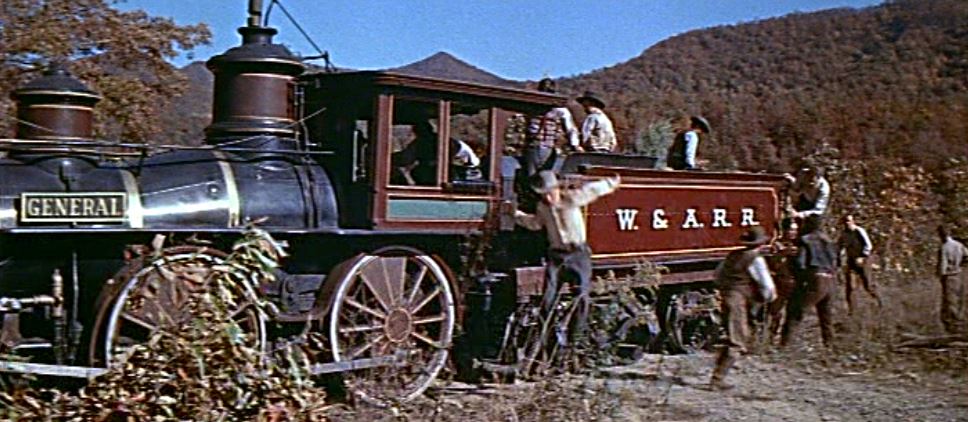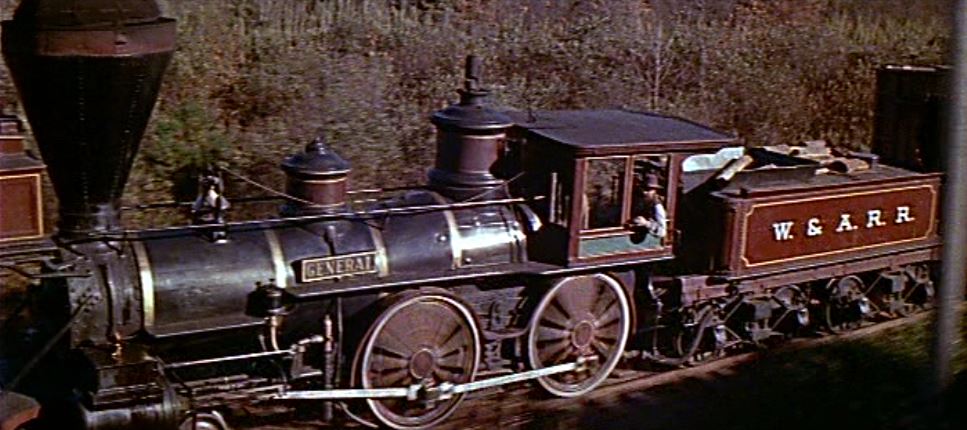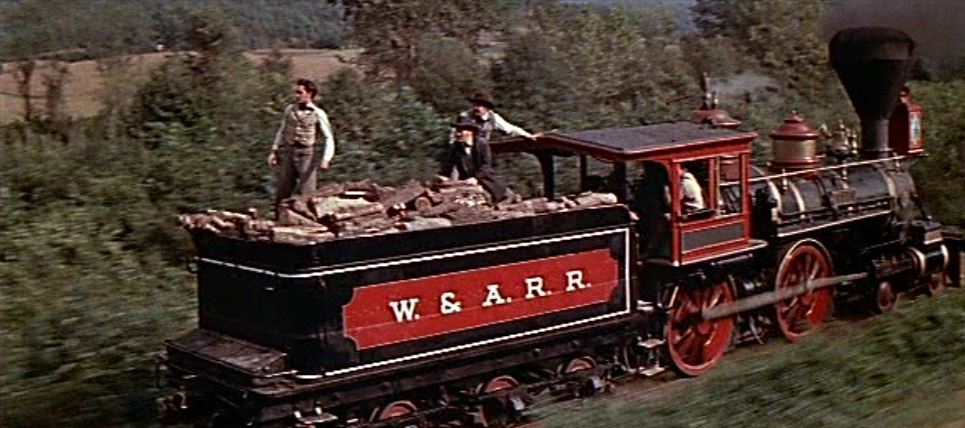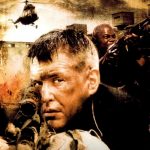🚂 The Great Locomotive Chase (1956) – A Thrilling Adventure on the Rails of History

The Great Locomotive Chase, directed by Francis D. Lyon, is a thrilling retelling of a true Civil War adventure that captures the daring bravery, tense maneuvers, and high-stakes tension of one of the most famous train chases in American history. Set in the early days of the Civil War, this film brings to life the Union’s bold attempt to sabotage the Confederate railway system, starring Fess Parker as the courageous leader James J. Andrews. This family-friendly adventure is both a historical tribute and an exhilarating cinematic experience that keeps viewers on the edge of their seats.
🚆 Plot Overview: A Daring Mission Behind Enemy Lines
The story follows James J. Andrews (Fess Parker), a Union spy who leads a small group of hand-picked soldiers deep into Confederate territory to carry out a secret mission. Their plan? To steal a train, “The General,” and drive it north, destroying tracks, bridges, and telegraph lines along the way to cripple the Confederate army’s supply route. However, things quickly go awry when they encounter the train’s resourceful conductor, William A. Fuller (Jeffrey Hunter), who notices the theft and sets off in hot pursuit, determined to reclaim the stolen locomotive.
As Andrews and his men race against time, their mission becomes a thrilling game of cat and mouse, with Fuller tirelessly pursuing them in another train. The soldiers’ mission is riddled with challenges, from mechanical breakdowns and dwindling supplies to fierce Confederate resistance. This relentless chase captures the ingenuity, bravery, and risk of their mission, leading to a climactic showdown that tests the resilience and courage of both Andrews and Fuller.
🎥 Visuals and Period Authenticity

The Great Locomotive Chase was filmed on location in Georgia, using historic steam trains and authentic Civil War-era costumes and settings, which add to the film’s sense of realism. The rolling hills, dense forests, and narrow railway tracks of the South provide a picturesque yet dangerous backdrop, adding intensity to the chase sequences. The film’s dedication to historical accuracy, from the trains to the uniforms, transports viewers back to the Civil War era, enhancing the authenticity of the story.
Francis D. Lyon’s direction captures the motion and rhythm of the chase with precision, using long shots of the trains cutting through the landscape and close-ups of the characters’ tense faces. The camera work makes the action feel personal and immediate, giving audiences a sense of the real danger faced by the soldiers and engineers in this daring mission.
🎬 Film Details:
- Title: The Great Locomotive Chase
- Director: Francis D. Lyon
- Release Date: June 8, 1956
- Cast: Fess Parker (James J. Andrews), Jeffrey Hunter (William A. Fuller), John Lupton (William Pittenger), Eddie Firestone (Robert Buffum)
- Genre: Adventure, Historical, War Drama
- Runtime: 1h 25m
⚔️ Themes of Patriotism, Sacrifice, and Bravery

The Great Locomotive Chase explores themes of loyalty, bravery, and the sacrifices made by soldiers on both sides of the Civil War. The Union soldiers, led by Andrews, risk their lives to execute a plan that they believe will help turn the tide of the war. Their commitment to their mission and willingness to face overwhelming odds emphasize the courage and resilience of individuals fighting for their cause.
The film also respects the Confederate characters, portraying Fuller not as an enemy but as a determined man with a duty to defend his territory. Fuller’s relentless pursuit of the stolen train highlights a different kind of bravery, showing that honor and loyalty can be found on both sides of a conflict. This nuanced portrayal adds depth to the story, making it more than just a tale of North versus South but rather a narrative about the personal convictions and sacrifices made by individuals during wartime.
🔥 Action and Suspense on the Rails
As the title suggests, the chase is the heart of the film, and The Great Locomotive Chase delivers nail-biting suspense as the Union soldiers try to stay one step ahead of Fuller’s determined pursuit. The challenges they encounter—whether it’s broken tracks, Confederate patrols, or the constant need to keep the train moving—add tension to every scene. The film’s focus on the mechanical workings of the steam trains, including the need to stop for water and wood, adds an authentic layer of suspense, making the audience feel the stress and urgency of the mission.
The pacing of the action is carefully constructed, building excitement as the trains barrel down the tracks, narrowly avoiding danger at every turn. The film balances action with moments of quiet tension, as the soldiers debate their next steps and wrestle with their fears and doubts. These moments of humanity make the thrilling chase sequences all the more impactful, drawing audiences into the stakes and motivations of each character.
⭐ Final Verdict: A Gripping Historical Adventure with Heart and Tension

The Great Locomotive Chase is an exciting blend of historical accuracy and cinematic tension that makes it a standout among 1950s war films. With memorable performances from Fess Parker and Jeffrey Hunter, the film highlights the courage and tenacity of both Union and Confederate soldiers, portraying a fascinating chapter of Civil War history with respect and dramatic flair. For fans of historical adventure films, The Great Locomotive Chase offers a unique and thrilling look at a real-life mission that feels both epic and personal.
This film is a perfect pick for anyone who loves tales of adventure and courage set against the backdrop of America’s past. Its blend of history, suspense, and action makes The Great Locomotive Chase an unforgettable ride through one of the Civil War’s most daring episodes.











